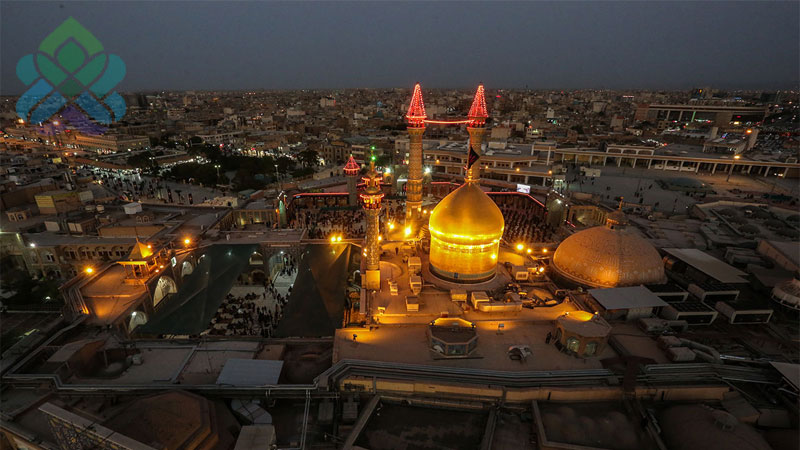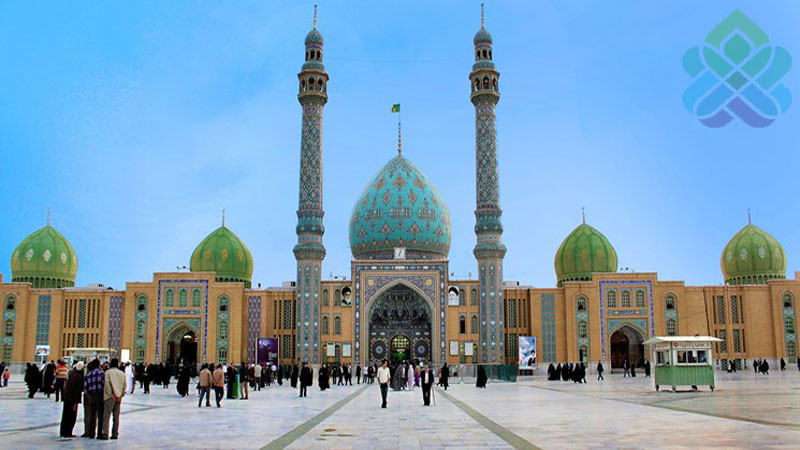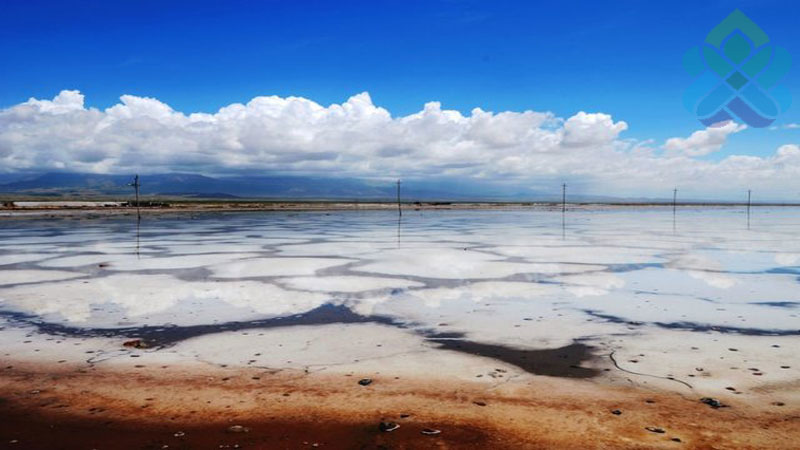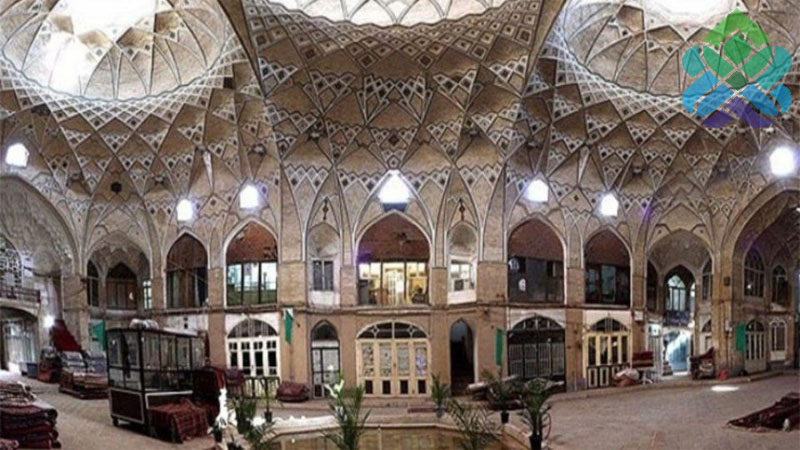Hazrat Fatima Masumeh Holy Shrine


Qom is the seventh metropolis and also the seventh largest city in Iran. Qom is the capital of Qom Province. It is located 140 km (87 mi) to the south of Tehran. At the 2016 census, its population was 1,201,158. It is situated on the banks of the Qom River.
Qom is considered holy by Shiʿa Islam, as it is the site of the shrine of Fatimah bint Musa, sister of Imam Ali ibn Musa Reza (Persian Imam Reza, 789–816 CE). The city is the largest center for Shiʿa scholarship in the world, and is a significant destination of pilgrimage, with around twenty million pilgrims visiting the city every year, the majority being Iranians but also other Shi'a Muslims from all around the world. Qom is famous for a Persian brittle toffee known as sohan, considered a souvenir of the city and sold by 2,000 to 2,500 "Sohan" shops.
Qom has developed into a lively industrial centre owing in part to its proximity to Tehran. It is a regional centre for the distribution of petroleum and petroleum products, and a natural gas pipeline from Bandar Anzali and Tehran and a crude oil pipeline from Tehran run through Qom to the Abadan refinery on the Persian Gulf. Qom gained additional prosperity when oil was discovered in 1956 and a large refinery was built between Qom and Tehran.
As the second holiest city in Iran (after Mashhad), many architectural, cultural, and natural sites it has to offer. Read on to discover the best things to see and do in Qom.
Jamkaran Mosque

This mosque has religious significance as the site where a local leader reportedly met the 12th Shia Imam. Construction is believed to have started in the mid-1730s, and the mosque has expanded over the years. The brickwork iwans, multi-colored tiles, and Thuluth calligraphy become especially picturesque at night, when floodlights illuminate the complex and give it a spiritual radiance.
Mount Khadr

This mount
Namak Lake (Salt Lake)

About 100 km east of Qom is the utterly desolate Namak (salt) Lake. A remnant of a sea from the Pleistocene epoch, only one square kilometer of the total 1800 square kilometer area is now covered in water. Visitors crunch layers of thick white salt as they walk across. This silent, other-worldly lake is visible from the Qom-Esfahan highway and should be a definite pit stop as you leave the city on your way towards Kashan or Esfahan.
Qom Bazaar

Yazdanpanah Historical House
Yazdanpanah Historical House dates back to the late Qajar and early Pahlavi era. This 120-year-old mansion is divided into separate wings to account for the changing temperatures throughout the year. Elaborately designed columns, windows, and windtowers stand out against the simple mud brick building. It’s a spacious yet cozy place to enjoy a Persian meal, particularly the traditional dizi stew or kebabs, followed by tea prepared over a charcoal fire.
اخبار اختصاصی
آرشیوتوصیه های مراقبتی در سندرم کمپارتمان
سندرم کمپارتمان در اثر بالا رفتن فشار بافتی در هریک از اندامها ، جریان خون در بافت کاهش می یابد و باعث کاهش در میزان اکسیژن در عضله و عصب می شود که سبب بروز درد در آن اندام نیز می گردد. این وضعیت بیشتر درضربه های وارد آمده به اندام ایجاد شده و در صورت درمان نشدن موجب آسیب های همیشگی از جمله نکروز و از دست رفتن اندام می گردد. این عارضه از عوارض آسیب های عروقی در شکستگی نیز می باشد.
1400/10/09...
معرفی بخش اتاق عمل جنرال مجتمع خیرین سلامت استان قم
معرفی بخش اتاق عمل جنرال
معرفی بخش نوزادان مجتمع خیرین سلامت استان قم
سال تاسیس: 1395 رئیس بخش : دکتر علیرضا سعادتی سرپرستار بخش: خانم مریم صادق زاده مکان استقرار بخش: طبقه پنجم ساختمان فرقانی
معرفی بخش داخلی مجتمع خیرین سلامت استان قم
سال تاسیس: 1395 رئیس بخش : دکتر نصیری سرپرستار بخش: آقای دریابکی مکان استقرار بخش: طبقه چهارم ساختمان فرقانی
معرفی بخش اتاق عمل جنرال مجتمع خیرین سلامت استان قم
معرفی بخش اتاق عمل جنرال
معرفی بخش نوزادان مجتمع خیرین سلامت استان قم
سال تاسیس: 1395 رئیس بخش : دکتر علیرضا سعادتی سرپرستار بخش: خانم مریم صادق زاده مکان استقرار بخش: طبقه پنجم ساختمان فرقانی
معرفی بخش داخلی مجتمع خیرین سلامت استان قم
سال تاسیس: 1395 رئیس بخش : دکتر نصیری سرپرستار بخش: آقای دریابکی مکان استقرار بخش: طبقه چهارم ساختمان فرقانی
...
حدیث 1
امام علی علیه السلام : مردم ، سه دسته اند : دانشمند خدایى ، و آموزنده در مسیر رستگارى ، و توده اى نادان که در پى هر بانگى مى روند ، و با هر بادى ، این سو و آن سو مى شوند ، و نه از نور دانش ، بهره اى گرفته اند ، و نه به پناهگاهى استوار ، پناه برده اند. النّاسُ ثَلاثَةٌ : عالِمٌ رَبّانِیٌّ ، ومُتَعَلِّمٌ عَلى سَبیلِ نَجاةٍ ، وهَمَجٌ رَعاعٌ أتباعُ کُلِّ ناعِقٍ ؛ یَمیلونَ مَعَ کُلِّ ریحٍ ، لَم یَستَضیؤوا بِنورِ العِلمِ ، ولَم یَلجَؤوا إلى رُکنٍ وَثیقٍ .
حدیث 5
پیامبر اکرم (ص) : خَیرُ الأصحابِ مَن قَلَّ شِقاقُهُ و کَثُرَ وِفاقُهُ. بهترین یاران کسی است که ناسازگاری اش اندک باشد و سازگاری اش بسیار.
حدیث 4
امام صادق علیه السلام : از آزار رساندن بپرهیزید تا بر عمرتان افزوده شود. تَجَنَّبُوا البَوائِقَ یُمَدَّ لَکُم فِی الأَعمارِ.
حدیث 3
امام علی علیه السلام : ـ در سفارش نامهاش به مالک اشتر ـ: ... از میان لشکریانت، آن را کهاز نظر تو براى خدا و پیامبر و امام خود، خیرخواه تر است، به فرماندهى برگزین؛ کسى که دامنش پاک تر و بُردبارىاش بیشتر است؛ از میان آنان که دیر به خشم آیند، و به پذیرش پوزش، تن دهند و بر ناتوانان رحمت آورند، و در برابر قوىدستان، سر فرود نیاورند، و از آن کسان که درشتى، آنان را بر نمىانگیزد و ناتوانى، آنان را بر جاى نمىنشانَد. فی عَهدِهِ إلى مالِکٍ الأَشتَرِ ـ: ... فَوَلِّ مِن جُنودِکَ أنصَحَهُم فی نَفسِکَ للّهِِ و لِرَسولِهِ و لإِِمامِکَ، و أنقاهُم جَیبا، و أفضَلَهُم حِلما، مِمَّن یُبطِئُ عَنِ الغَضَبِ، و یَستَریحُ إلَى العُذرِ، و یَرأَفُ بِالضُّعَفاءِ، و یَنبو عَلَى الأقَوِیاءِ، و مِمَّن لا یُثیرُهُ العُنفُ، و لا یَقعُدُ بِهِ الضَّعفُ .
حدیث 2
امام علی علیه السلام : خداشناس ، چهره اش شاد و خندان است ، و دلش ترسان و اندوهناک . العارِفُ وَجهُهُ مُستَبشِرٌ مُتَبَسِّمٌ ، وقَلبُهُ وَجِلٌ مَحزونٌ .
حدیث 1
امام علی علیه السلام : مردم ، سه دسته اند : دانشمند خدایى ، و آموزنده در مسیر رستگارى ، و توده اى نادان که در پى هر بانگى مى روند ، و با هر بادى ، این سو و آن سو مى شوند ، و نه از نور دانش ، بهره اى گرفته اند ، و نه به پناهگاهى استوار ، پناه برده اند. النّاسُ ثَلاثَةٌ : عالِمٌ رَبّانِیٌّ ، ومُتَعَلِّمٌ عَلى سَبیلِ نَجاةٍ ، وهَمَجٌ رَعاعٌ أتباعُ کُلِّ ناعِقٍ ؛ یَمیلونَ مَعَ کُلِّ ریحٍ ، لَم یَستَضیؤوا بِنورِ العِلمِ ، ولَم یَلجَؤوا إلى رُکنٍ وَثیقٍ .
حدیث 5
پیامبر اکرم (ص) : خَیرُ الأصحابِ مَن قَلَّ شِقاقُهُ و کَثُرَ وِفاقُهُ. بهترین یاران کسی است که ناسازگاری اش اندک باشد و سازگاری اش بسیار.
حدیث 4
امام صادق علیه السلام : از آزار رساندن بپرهیزید تا بر عمرتان افزوده شود. تَجَنَّبُوا البَوائِقَ یُمَدَّ لَکُم فِی الأَعمارِ.
حدیث 3
امام علی علیه السلام : ـ در سفارش نامهاش به مالک اشتر ـ: ... از میان لشکریانت، آن را کهاز نظر تو براى خدا و پیامبر و امام خود، خیرخواه تر است، به فرماندهى برگزین؛ کسى که دامنش پاک تر و بُردبارىاش بیشتر است؛ از میان آنان که دیر به خشم آیند، و به پذیرش پوزش، تن دهند و بر ناتوانان رحمت آورند، و در برابر قوىدستان، سر فرود نیاورند، و از آن کسان که درشتى، آنان را بر نمىانگیزد و ناتوانى، آنان را بر جاى نمىنشانَد. فی عَهدِهِ إلى مالِکٍ الأَشتَرِ ـ: ... فَوَلِّ مِن جُنودِکَ أنصَحَهُم فی نَفسِکَ للّهِِ و لِرَسولِهِ و لإِِمامِکَ، و أنقاهُم جَیبا، و أفضَلَهُم حِلما، مِمَّن یُبطِئُ عَنِ الغَضَبِ، و یَستَریحُ إلَى العُذرِ، و یَرأَفُ بِالضُّعَفاءِ، و یَنبو عَلَى الأقَوِیاءِ، و مِمَّن لا یُثیرُهُ العُنفُ، و لا یَقعُدُ بِهِ الضَّعفُ .
حدیث 2
امام علی علیه السلام : خداشناس ، چهره اش شاد و خندان است ، و دلش ترسان و اندوهناک . العارِفُ وَجهُهُ مُستَبشِرٌ مُتَبَسِّمٌ ، وقَلبُهُ وَجِلٌ مَحزونٌ .
حدیث 1
امام علی علیه السلام : مردم ، سه دسته اند : دانشمند خدایى ، و آموزنده در مسیر رستگارى ، و توده اى نادان که در پى هر بانگى مى روند ، و با هر بادى ، این سو و آن سو مى شوند ، و نه از نور دانش ، بهره اى گرفته اند ، و نه به پناهگاهى استوار ، پناه برده اند. النّاسُ ثَلاثَةٌ : عالِمٌ رَبّانِیٌّ ، ومُتَعَلِّمٌ عَلى سَبیلِ نَجاةٍ ، وهَمَجٌ رَعاعٌ أتباعُ کُلِّ ناعِقٍ ؛ یَمیلونَ مَعَ کُلِّ ریحٍ ، لَم یَستَضیؤوا بِنورِ العِلمِ ، ولَم یَلجَؤوا إلى رُکنٍ وَثیقٍ .
انتخاب حالت کور رنگی
با انتخاب حالت کوررنگی تصاویر این وبسایت متناسب با حالت کوررنگی شما بهینه می شود
تغییر اندازه فونت:
تغییر فاصله بین کلمات:
تغییر فاصله بین خطوط:
تغییر نوع موس:



















